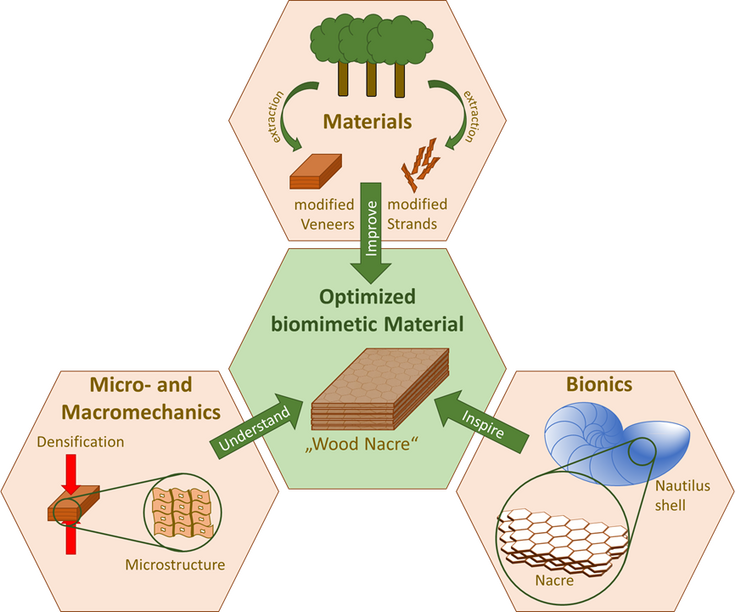Structural and micromechanical properties of high densified wood and usages thereof in biomimetic approaches
SUPERVISOR: Ulrich MÜLLER
PROJECT ASSIGNED TO: Peter HALBAUER
Driven by the need to reduce the carbon footprint of public and private transport, there has been a resurgence of interest in use of sustainable and renewable materials in industry. [1-5] Problematic for the use of renewable materials for structural purposes in these areas is their low mechanical performance compared to metals. Hence to this date, for example, still more than two-thirds of the mass of an automobile is composed of various metals. [6]
A possible solution to increase the strength of e.g. wood, one of the most readily available sources of renewable raw materials, is delignification and densification. It has been shown that it is possible to increase the tensile strength in fibre direction by more than ten times the basic value of non-treated wood. [7] In contrast, delignified and highly densified wood shows a reduction in mechanical properties transverse to the fibre direction. [8] Investigating the structural and micromechanical properties of these materials may lead to a better understanding of these effects and allow optimization for use in structural applications.
In addition, biomimetic approaches such as the implementation of natural designs, such as those found in e.g. the shells of marine animals or the trunk-branch connections of trees, offer opportunities for further optimization of renewable materials for use in specific industrial applications.
In this context, the aim of the dissertation is to observe and describe the failure mechanisms of highly densified wooden veneers and to possibly optimize composite materials composed of them by implementing designs found in natural structures.

[1] https://www.volkswagen-newsroom.com/en/stories/eco-balance-of-electric-cars-interior-15487-15487
[2] https://group.mercedes-benz.com/sustainability/resources/sustainable-materials.html
[3] https://www.continental-tyres.co.uk/b2c/stories/sustainable-materials-in-cars.html
[4] https://www.airbus.com/en/innovation/disruptive-concepts/future-materials
[5] https://www.nasa.gov/press-release/nasa-awardees-to-develop-sustainable-aviation-composite-tech
[6] Henriksson, Introducing New Materials in the Automotive Industry: Managing the Complexity of Introducing New Materials in Existing Production Systems, Linköping University, Sweden, 2017
[7] Song, Chen, Zhu, et al. Processing bulk natural wood into a high-performance structural material. Nature 554, 224–228 (2018). doi.org/10.1038/nature25476
[8] Jakob, Gaugeler, Gindl-Altmutter, Effects of Fiber Angle on the Tensile Properties of Partially Delignified and Densified Wood. Materials 2020, 13, 5405. doi.org/10.3390/ma13235405
